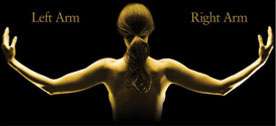Golfer’s Elbow(Medial Epicondylitis)
What is Golfer’s Elbow (Medial Epicondylitis)?
Also known as medial epicondylitis, Golfer’s elbow is a condition characterized by inflammation of the inside of the elbow joint as a result of strain upon several tendons that originate there.
What causes Golfer’s Elbow (Medial Epicondylitis)?
Golfer’s elbow is most often caused by repetitive wrist and finger flexion, such as can be seen in a standard golf grip, hence the name. Sometimes, however, as with Tennis elbow, the condition may arise for no apparent reason, although this is often the result of a microtear flexor muscle origin from the epicondyle itself, leading to the inflammation of the whole area.
What are symptoms of Golfer’s Elbow (Medial Epicondylitis)?
Golfer’s elbow or medial epicondylitis is characterized by pain, tenderness, stiffness and, of course, swelling of the affected elbow. Some people may also experience numbness or tingling in their fingers and hands as well as general weakness in the upper extremities. The condition can be either chronic or acute, which is to say that it can develop over time or appear suddenly, but the manifestation is the same. Pain may increase when one engages in certain activities that put stress on the epicondyle tendons, such as swinging a golf club (or tennis racket), flexing the wrist, shaking hands, turning a doorknob or picking up heavy objects.
How to diagnose Golfer’s Elbow (Medial Epicondylitis) .
Golfer’s elbow or medial epicondylitis is easily diagnosed with a simple test, allowing the doctor to judge the extent of the stiffness and reduced mobility in the elbow, as well as the inflammation. It is advisable for the doctor to have some X-rays taken to rule out any fracture or look for indicators of a larger problem such as arthritis.
Non-surgical treatment of Golfer’s Elbow (Medial Epicondylitis).
The simplest way to alleviate the pain and discomfort of Golfer’s elbow or medial epicondylitis is simply to rest the affected area. By avoiding those activities that led to the inflammation in the first place, the swelling will usually subside. Along with regular icing and over the counter pain medications (Advil, Aleve,etc.), it will serve you well to exercise and strengthen the elbow, so that it will be less likely to succumb to this type of inflammation again. If standard pain relievers are ineffective, your doctor may suggest an injection of cortisone to the affected area to relieve some of the pain and restore motion for a period of time.
Surgical treatment of Golfer’s Elbow (Medial Epicondylitis) .
Surgery is necessary in only about 10% of Golfer’s elbow or medial epicondylitis cases, but if it is required, the most common is called the medial epicondyle release, in which the surgeon goes into the place where the tendon and the epicondyle join and removes any scar tissue or irritated flesh as the result of the inflammation. The tendon is cut away from the epicondyle, and sewn onto the nearby fascia, so that the irritation that is causing the inflammation is reduced significantly.
How can Dr. Knight help you with Golfer’s Elbow (Medial Epicondylitis)?
As a lifelong athlete, Dr. Knight knows how hard it can be to sit on the sidelines waiting to heal while others play sports that you love. While it is important not to rush the process of healing, Dr. Knight understands that it is in your best interest to get you back out on the field, or links, or court, as soon as medically advisable, so you can get back to living your active life.
Disclaimer
HandAndWristInstitute.com does not offer medical advice. The information presented here is offered for informational purposes only. Read Disclaimer

